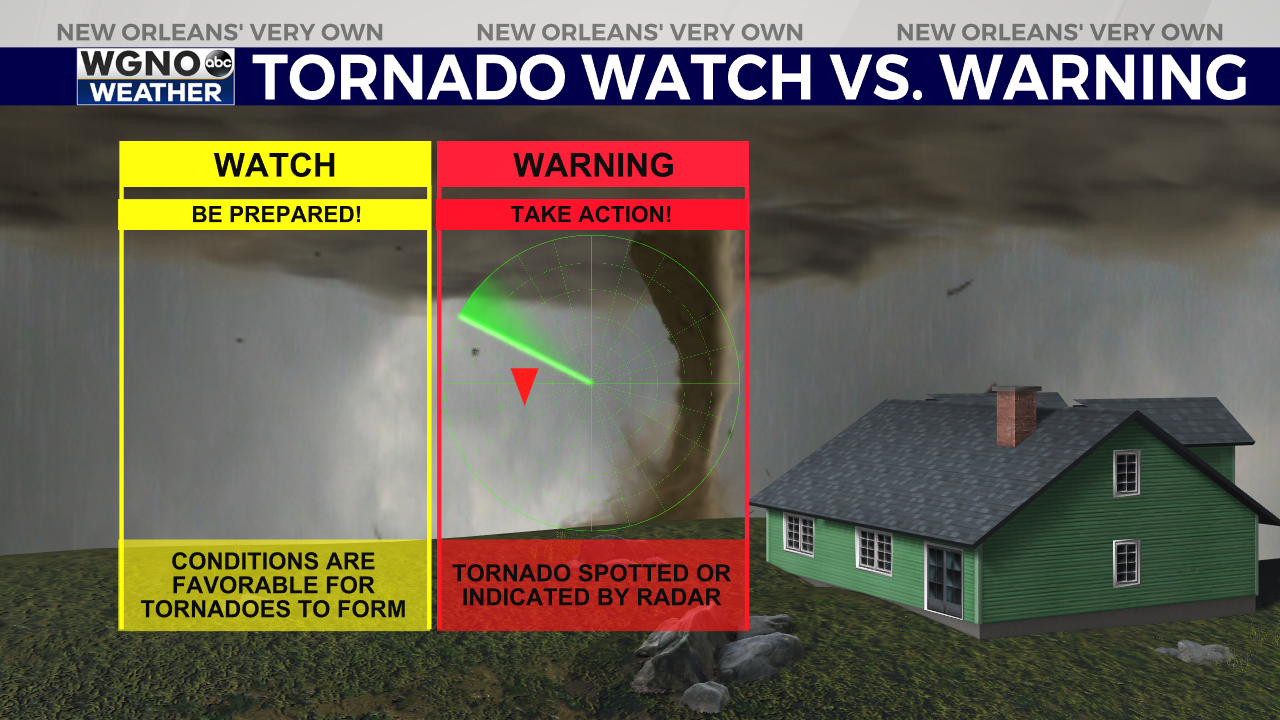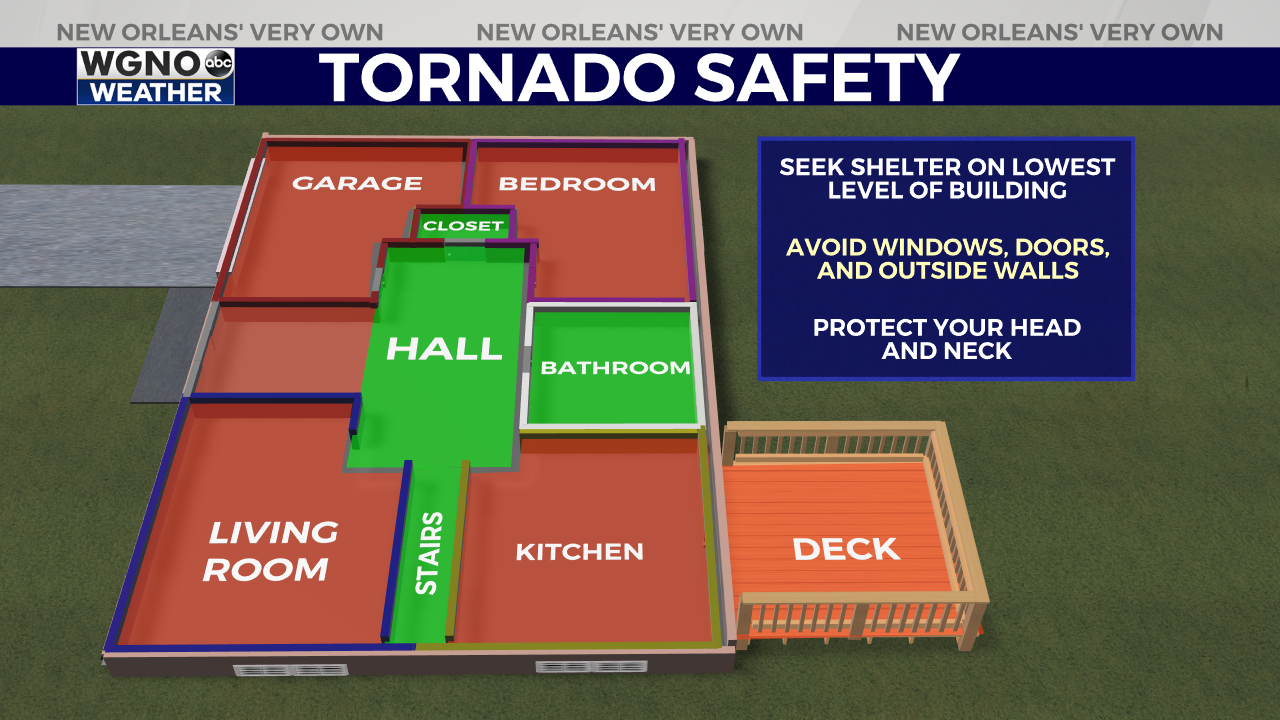NEW ORLEANS (WGNO) — Tornadoes are one of nature’s most destructive forces, capable of causing immense damage and posing significant risks to human life.
First, understanding the distinction between a tornado watch and a tornado warning is crucial for preparedness:
- Tornado Watch: Issued by the Storm Prediction Center when conditions are favorable for the development of tornadoes. During a tornado watch, it’s essential to stay vigilant and be prepared to take action if necessary.
- Tornado Warning: Issued when a tornado has been detected by radar or reported by spotters on the ground. A tornado warning indicates an imminent threat to life and property, requiring immediate action to seek shelter in a safe location.

Whether you’re indoors, outdoors, or on the road, here’s what you need to know to protect yourself during a tornado.
For Those Outdoors:
- If you’re outdoors and a tornado is approaching, the safest option is to seek shelter immediately.
- If no shelter is available, find a low-lying area like a ditch and lie flat, covering your head with your hands.
- Avoid seeking shelter under bridges or overpasses, as these areas can become wind tunnels and increase the risk of injury from flying debris.
For Drivers:
- If you’re driving and encounter a tornado, do not attempt to outrun it. Instead, abandon your vehicle and seek shelter in a sturdy building or a low-lying area.
- If you cannot find shelter, stay in your vehicle with your seatbelt on, and put your head below the windows, covering it with your hands and a coat or blanket if possible.
- Avoid parking under bridges or overpasses, as these can be dangerous areas during a tornado.
For Those in Mobile Homes:
- Mobile homes are highly vulnerable to tornadoes and offer little protection. If you live in a mobile home, have a plan in place to seek shelter elsewhere when severe weather threatens.
- If you cannot leave your mobile home, seek shelter in a nearby sturdy building or designated storm shelter.
- If shelter is not available, lie flat in a low-lying area and cover your head with your hands.
For Those in Houses:
- Seek shelter in the lowest level of your home, preferably a basement or storm cellar. If no basement is available, choose a small, windowless interior room on the lowest level, such as a bathroom or closet.
- Stay away from windows and exterior walls, as these areas are more prone to damage from flying debris.
- Protect yourself by covering your head and neck with sturdy furniture or a mattress.

For Those in High-Rise Buildings:
- If you live in a high-rise building, seek shelter on the lowest floor possible. Avoid seeking shelter on the top floors or near windows.
- Use the stairwells to evacuate if necessary, as elevators may not be operational during severe weather.
- Follow the building’s designated tornado shelter procedures if available, and stay tuned to local emergency alerts for further instructions.
Remember, preparation is key to staying safe during a tornado. Stay informed about weather conditions in your area, have a plan in place for seeking shelter, and always prioritize your safety and the safety of those around you. By following these essential tips, you can increase your chances of weathering the storm unharmed.
Stay up to date with the latest news, weather and sports by downloading the WGNO app on the Apple or Google Play stores and by subscribing to the WGNO newsletter.



